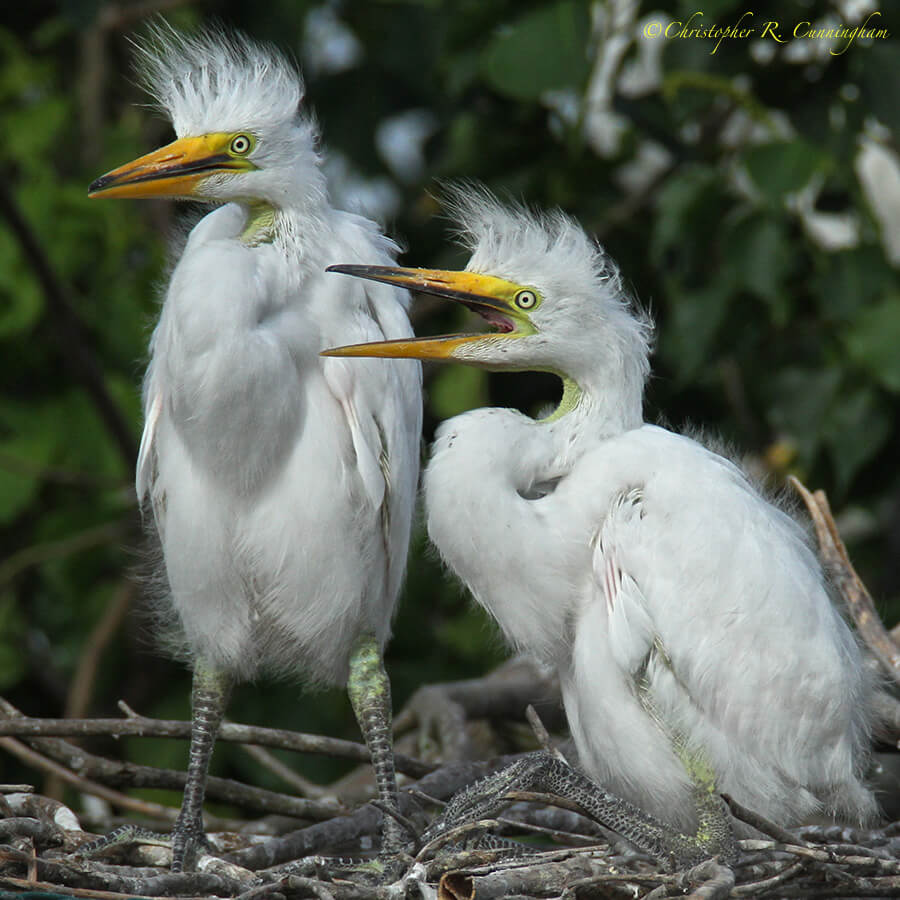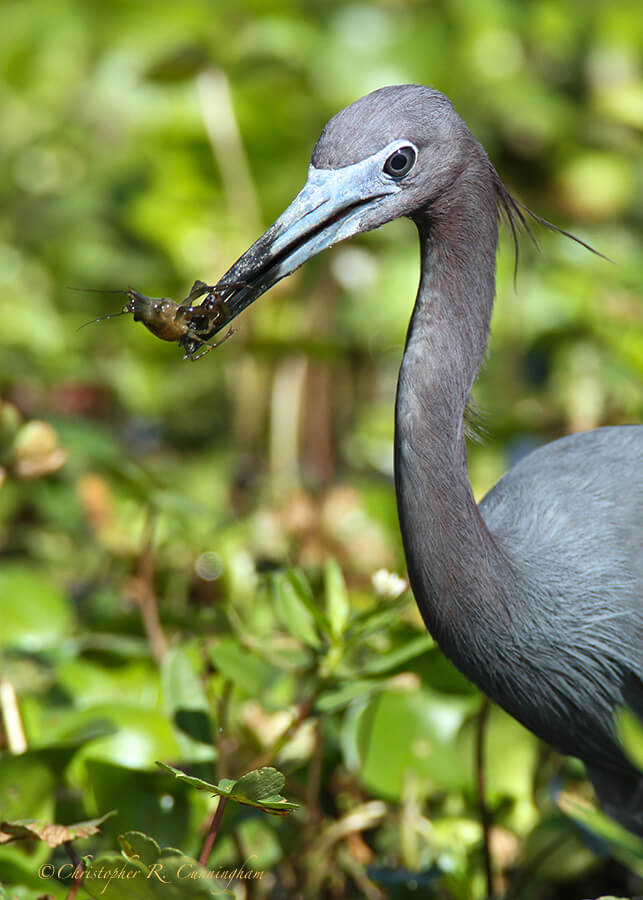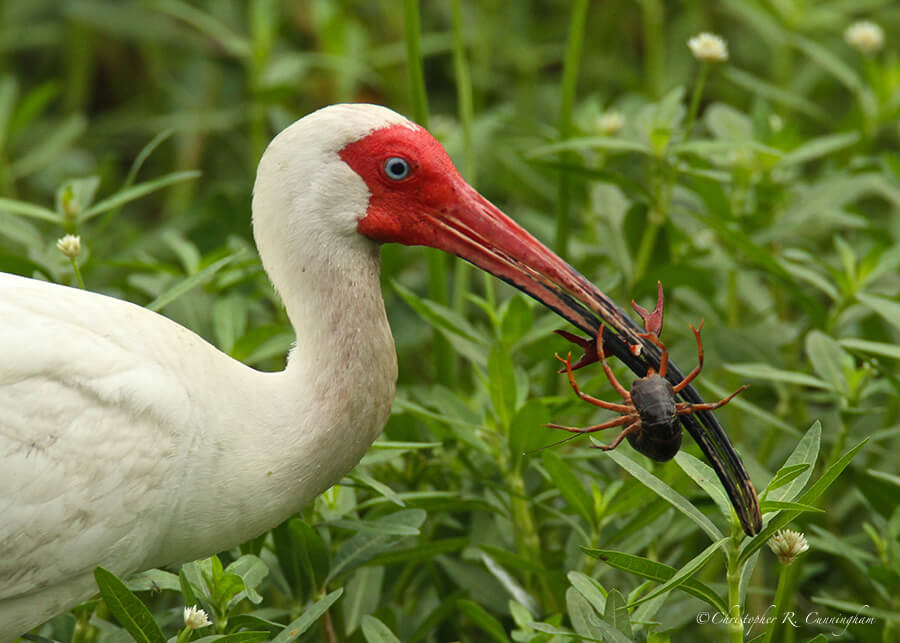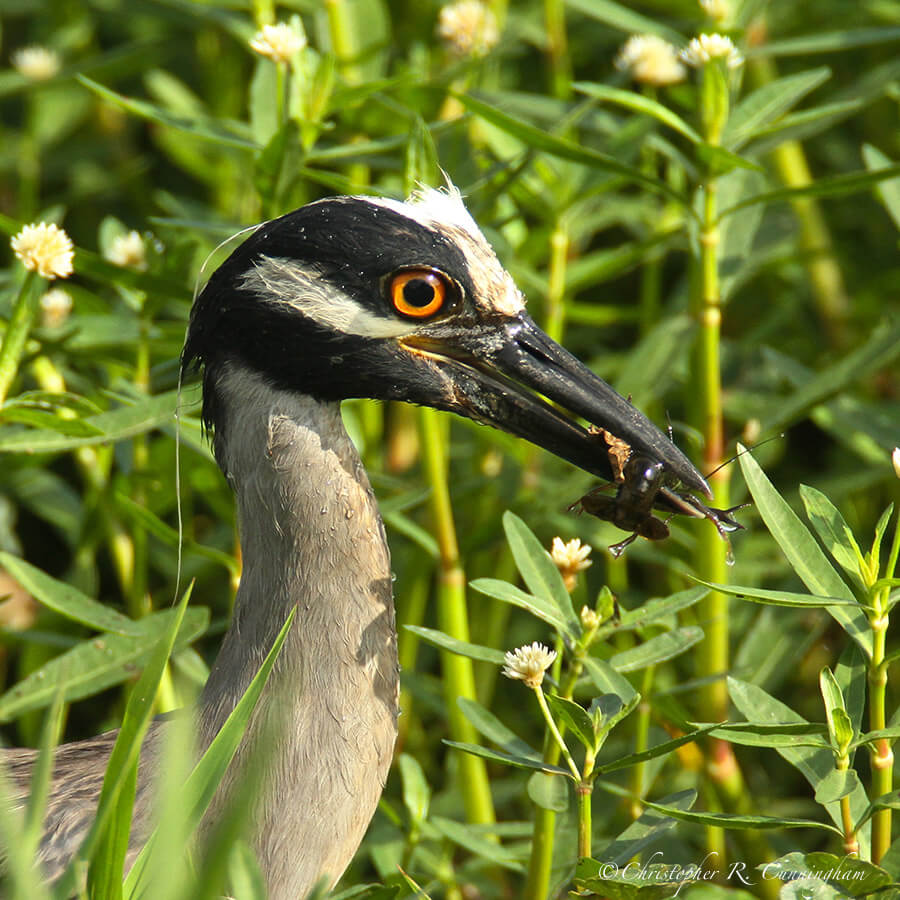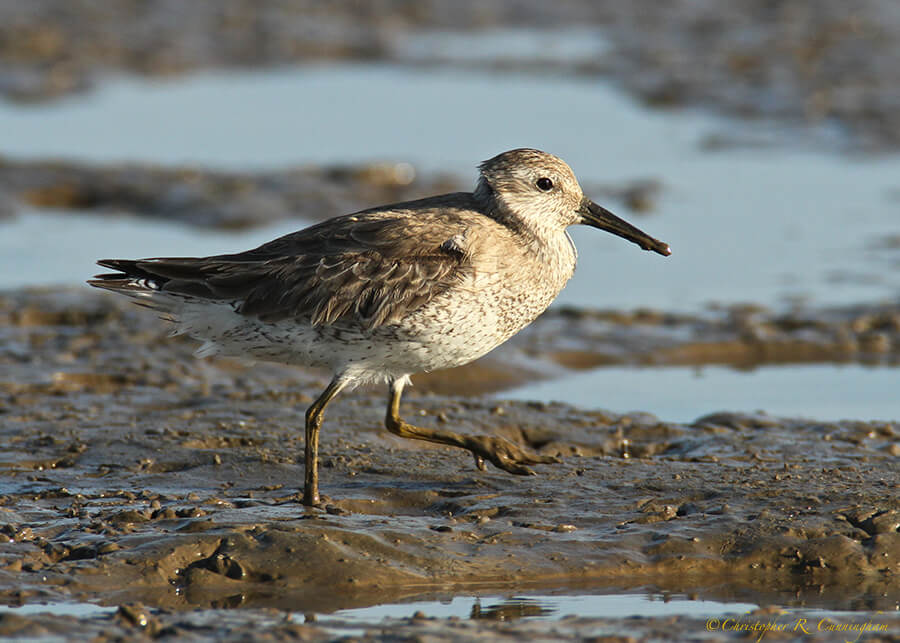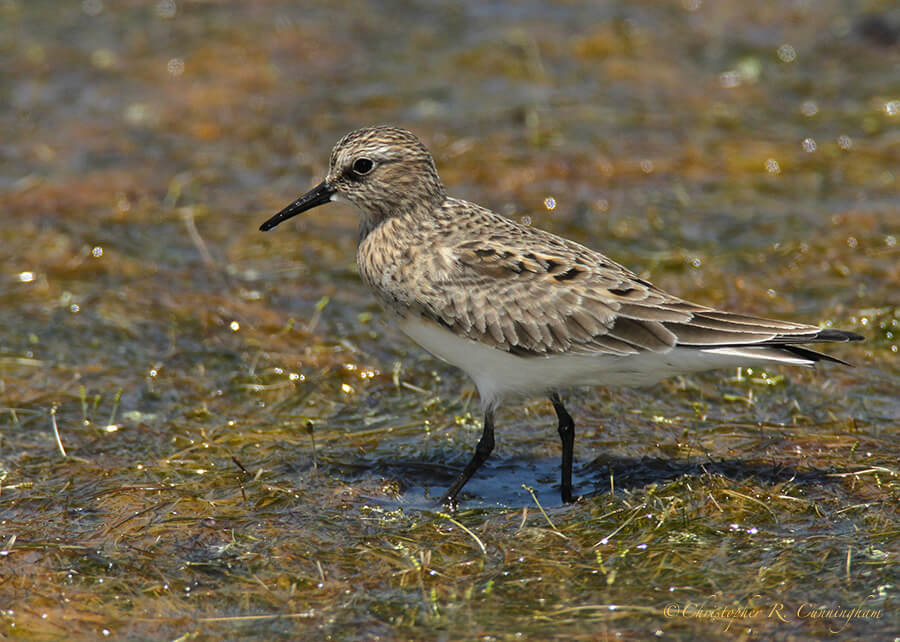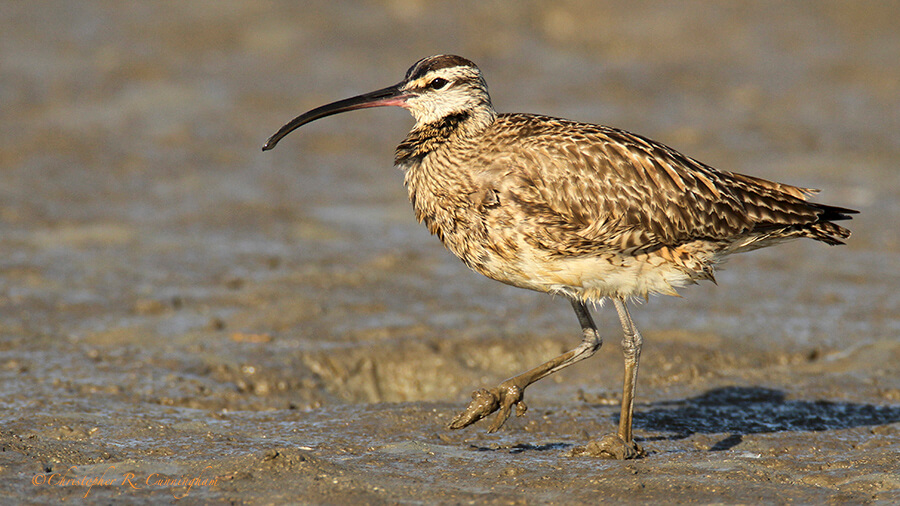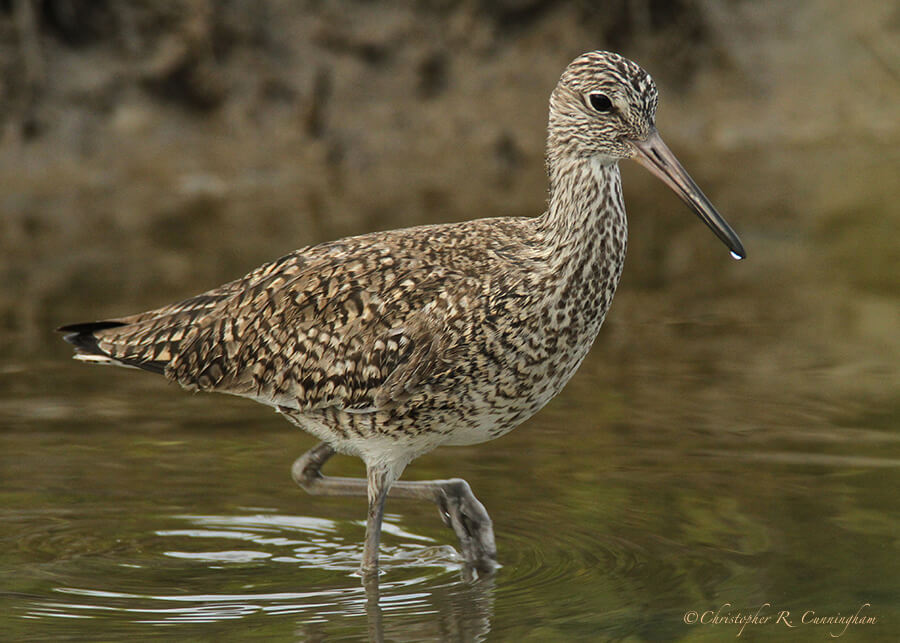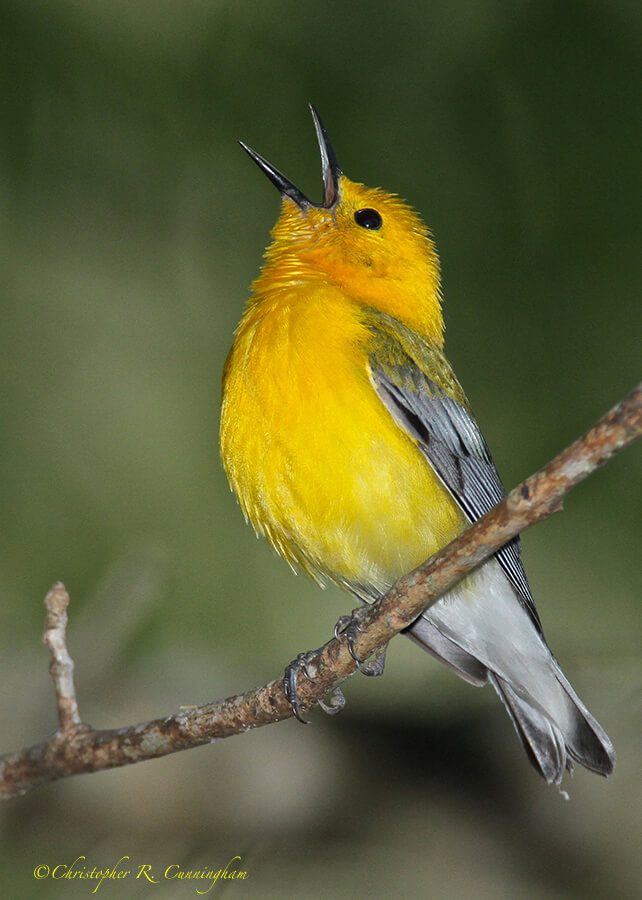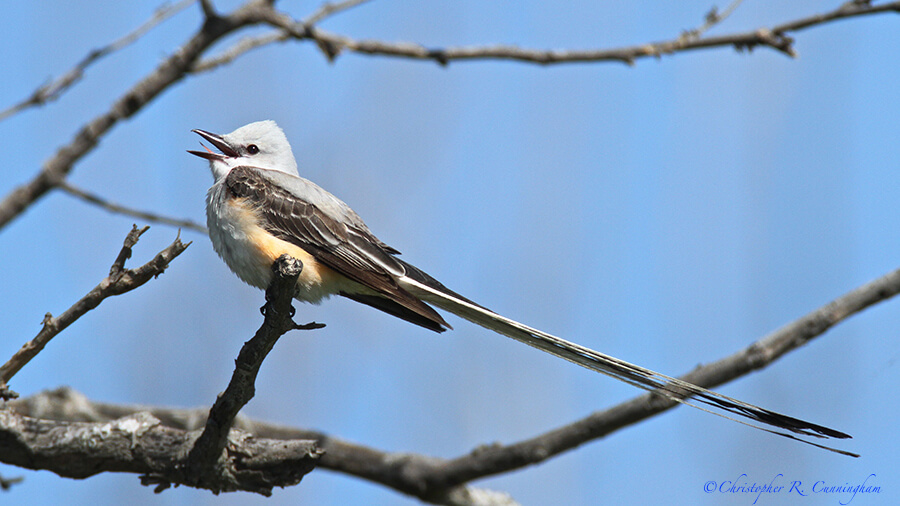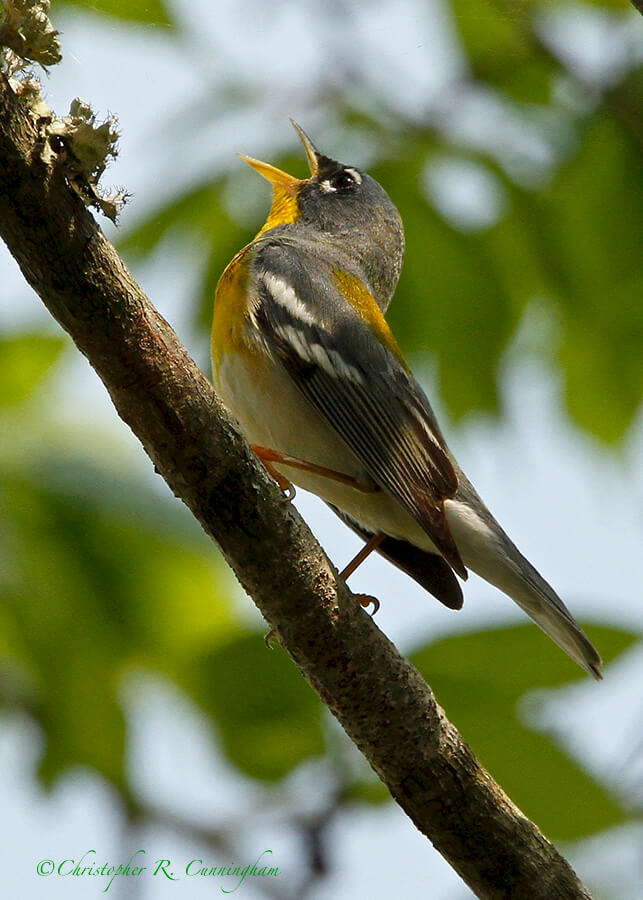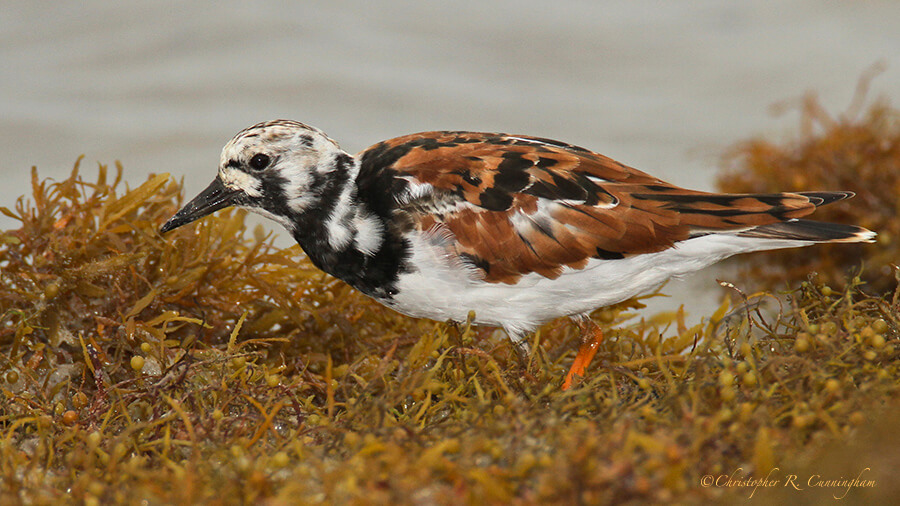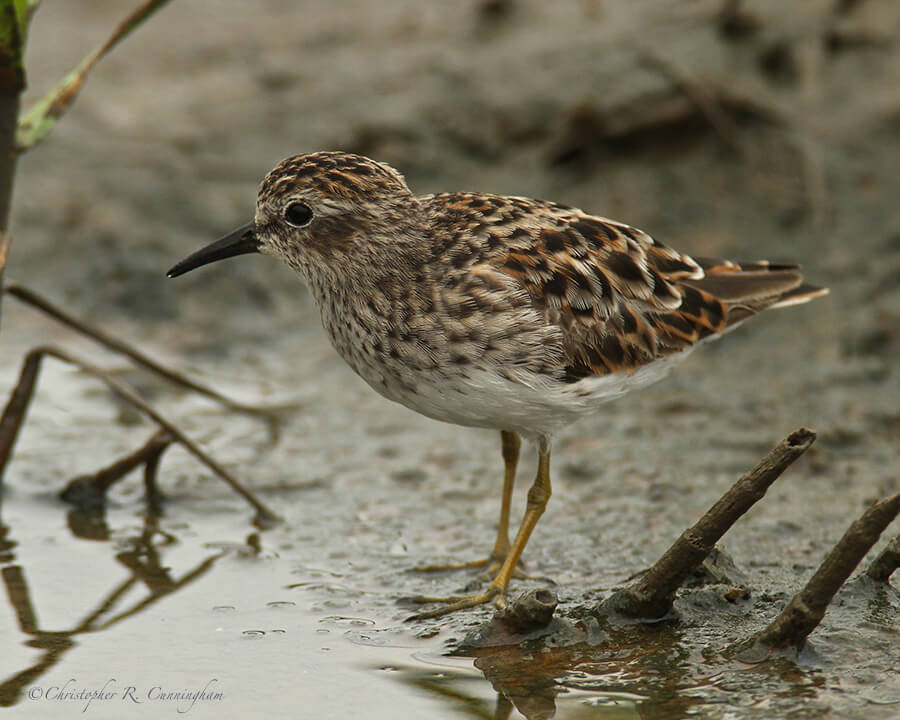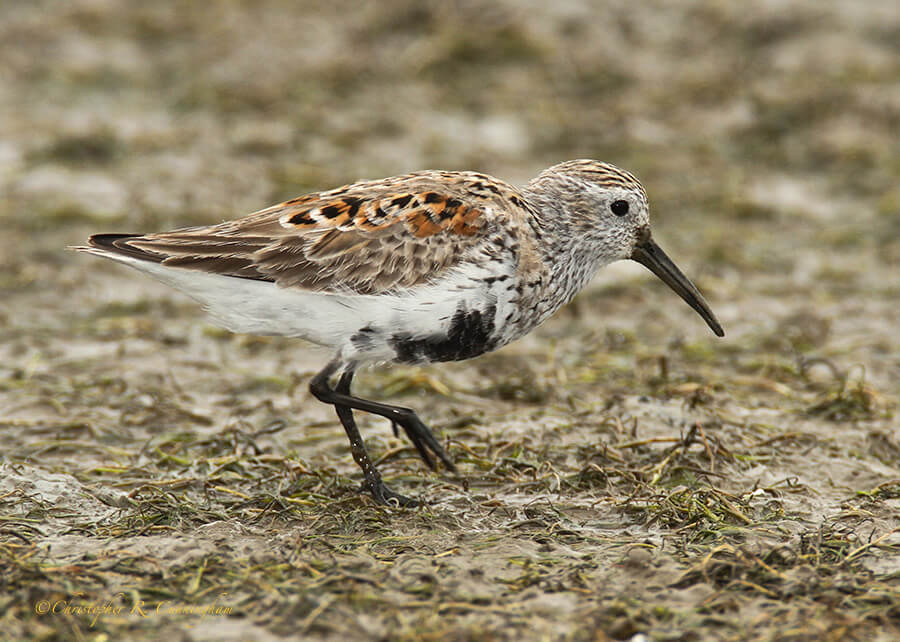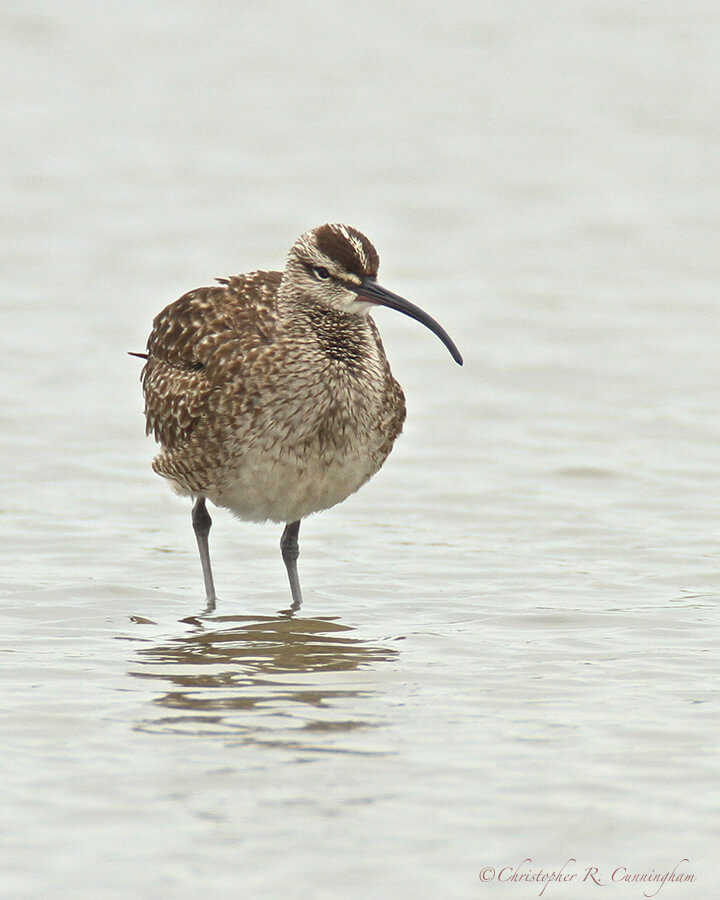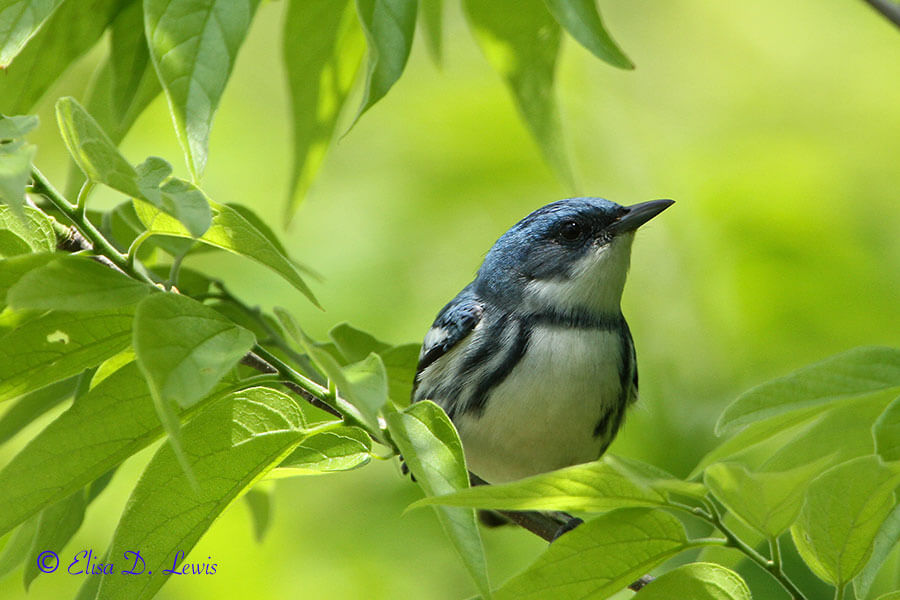
After birding or photo-birding, I often capsulize my experience into a theme or headline. For example, I’ll say to Chris, “The story of today was ‘Hooded Warbler Invasion'” or “Today’s special: ‘Unlucky Crawfish.'” On April 19th this year, with migration in full swing, the story was “Blue.” I was amazed by the number of Indigo Buntings on Pelican Island that day and equally frustrated at my inability to capture a decent image of just one of them. After exhausting my patience, I backed into the shade of a large oak to wait for something to happen in the hackberries, just onshore of Galveston Bay, in front of me. I was practicing my spider inspired “sit-and-wait” technique where I dissolve into the brush and see what appears. Can you say chiggers?
Yes, well, before the slow-motion horror show in multiple miniature revealed itself, there were glimpses of warblers, hunting away and presumably oblivious to my presence. One particular warbler caught my eye. Could it be? Yes! A male Cerulean Warbler. My first ever sighting. I was committed. I wasn’t leaving until I captured the moment. I was focused. I didn’t dare reposition the lens to try for the Indigo Buntings now foraging, ironically, nearby. I knew the Cerulean was a rarity and I couldn’t help but feel joyful to see it finding food and shelter in my coastal backyard. Incidentally, Cerulean Warblers show the highest rate of decline of any U.S. warbler.
It took hours of patiently waiting for the little guy to come back around to my side of the tree and almost a hundred frames, but I finally got something that reflects the beauty of the encounter. It was my best trade-off for a chigger infestation to date. It was also my top headline of Migration 2014. With migration behind us and the breeding season in progress, we are enjoying the avian birth announcements.
You may get skinned knees and elbows, but it’s worth it if you score a spectacular goal. —Mia Hamm
©2014 Elisa D. Lewis. All rights reserved. No text or images may be duplicated or distributed without permission.
